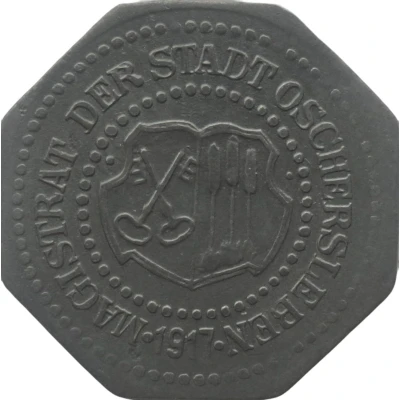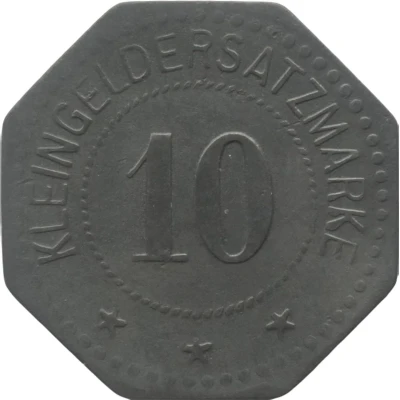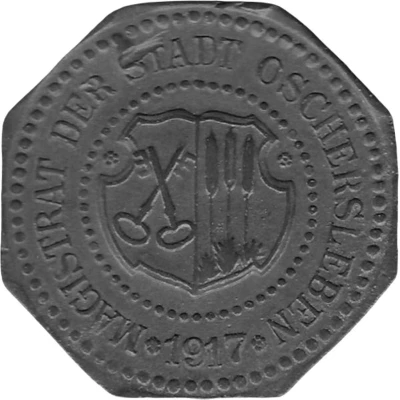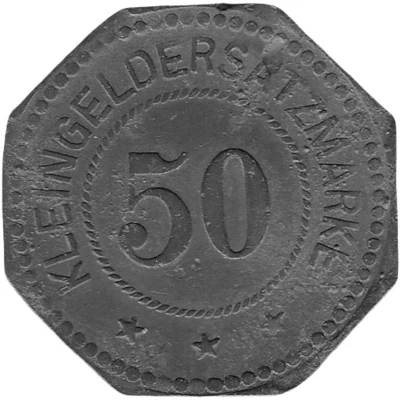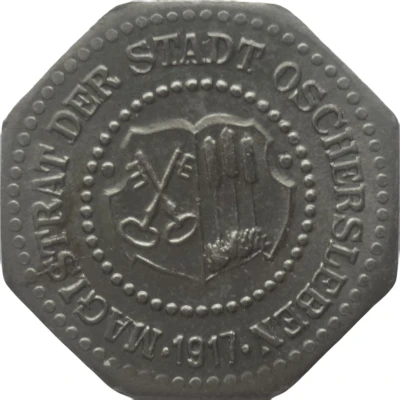
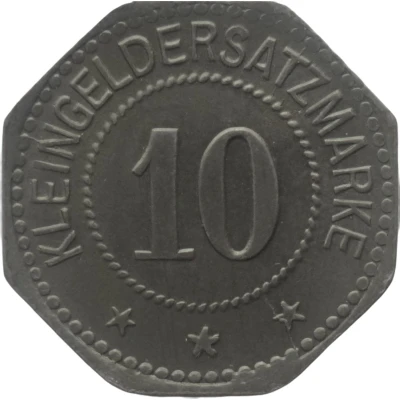

© Willem63 (CC BY-NC-SA)
10 Pfennigs - Oschersleben
1917 year| Iron | 2.8 g | 20.8 mm |
| Issuer | City of Oschersleben (Prussian province of Saxony) |
|---|---|
| Emperor | William II (Wilhelm II) (1888-1918) |
| Type | Standard circulation coin |
| Year | 1917 |
| Value | 10 Pfennigs (10 Pfennige) (0.10) |
| Currency | Mark (1914-1924) |
| Composition | Iron |
| Weight | 2.8 g |
| Diameter | 20.8 mm |
| Thickness | 1.2 mm |
| Shape | Octagonal (8-sided) |
| Technique | Milled |
| Orientation | Medal alignment ↑↑ |
| Demonetized | Yes |
| Updated | 2024-10-04 |
| Numista | N#21414 |
|---|---|
| Rarity index | 77% |
Reverse
Pearl rim, legend surrounding rope circle with denomination centered
Script: Latin
Lettering:
KLEINGELDERSATZMARKE
10
★ ★ ★
Edge
Plain
Comment
Issuing agency: [Stadt, Provinz Sachsen].Interesting fact
One interesting fact about the 10 Pfennigs - Oschersleben 1917 coin is that it was issued during a time of economic turmoil in Germany, known as the "Inflationary Period" (1914-1923). During this time, the value of the German mark (the national currency) plummeted, and prices for everyday goods skyrocketed. As a result, many Germans turned to alternative forms of currency, such as local emergency coins like the 10 Pfennigs - Oschersleben 1917, which were issued by cities and towns across the country to address the shortage of small change. Despite their humble denomination, these coins have become highly sought-after collectibles today, offering a unique glimpse into Germany's economic history.
